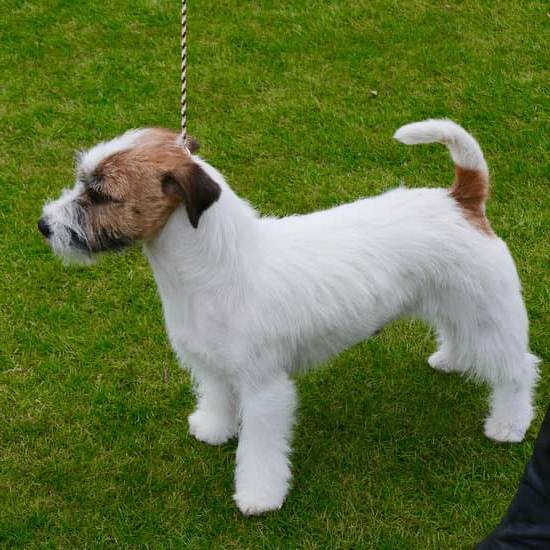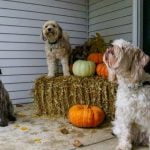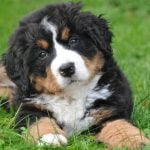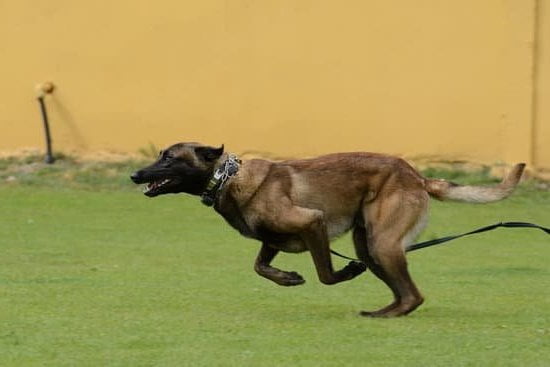Training your dog to poop in a designated area is not only a practical step in maintaining a clean and odor-free yard, but it also provides numerous benefits for both you and your furry friend. By designating a specific spot for your dog to do their business, you can easily manage and maintain cleanliness in your outdoor space.
In this article, we will explore the importance of training your dog to poop in a designated area, the benefits it offers, and provide you with a step-by-step guide on how to effectively train your canine companion.
When it comes to having a well-trained dog, teaching them where to go potty is crucial. Not only does this help keep your yard free from unsightly messes, but it also eliminates the risk of stepping into an unexpected surprise while spending time outdoors. By teaching your dog to poop in a specific area, you can focus on cleaning up after them more efficiently and reduce the chances of them soiling other parts of your property.
Moreover, training your dog to poop in a designated area significantly simplifies waste management. Instead of searching throughout your entire yard for their droppings, you can easily delegate one spot as their potty area. This makes the cleaning process much quicker and more convenient for you.
In addition to these practical benefits, training your dog to use a designated pooping area also helps establish structure and routine in their daily activities. Dogs thrive on consistency, and by implementing this training technique, you are providing them with clear guidelines on where they are expected to go potty. This ultimately contributes to their overall obedience and discipline.
Understanding the Benefits of Designating a Pooping Area for Your Dog
Training your dog to poop in a designated area has numerous benefits for both you and your furry friend. By understanding these benefits, you can see why it is important to establish a specific spot for your dog to do their business.
- Cleanliness: One of the main benefits of designating a pooping area is that it helps maintain cleanliness in your yard or living space. Instead of having to constantly clean up after your dog wherever they choose to go, training them to use a specific spot ensures that all the waste is collected in one area. This makes it much easier for you to clean up and maintain a tidy environment.
- Odor Control: Another advantage of having a designated pooping area for your dog is that it helps control unpleasant odors. When waste is concentrated in one spot, it can be managed more effectively by using odor-neutralizing products or regularly cleaning the area. This can significantly reduce any offensive smells that would otherwise permeate throughout your yard or living space.
- Yard Preservation: Training your dog to poop in a designated area also helps preserve the condition of your yard or outdoor space. Dogs have natural instincts to mark territory and frequently urinate on grass, which can cause yellow spots and damage over time. By teaching them to use a specific spot for their bathroom needs, you can minimize the impact on your green spaces and keep them looking fresh and healthy.
To achieve these benefits, it is important to prepare and create an appropriate environment for your dog’s designated pooping area. This includes choosing the right spot, considering factors such as accessibility and privacy, as well as ensuring the necessary tools and materials are available for effective training.
Preparing the Designated Pooping Area
When preparing the designated pooping area for your dog, it is important to choose the right spot. Selecting an appropriate location is crucial to ensure that both you and your dog are comfortable with the area. Here are some factors to consider when choosing the right spot for your dog’s pooping area:
- Accessibility: The designated spot should be accessible and easily reachable for both you and your dog. Consider proximity to your house or the main entrance of your yard for convenience.
- Privacy: Dogs prefer a quiet and secluded spot to do their business. Look for an area that offers some privacy, away from high foot traffic or noisy areas of your yard.
- Surface Type: Different dogs have different preferences when it comes to where they like to go potty. Some may prefer grassy areas, while others may like gravel or pebbles. Pay attention to your dog’s preferences and choose a surface that suits their needs.
- Drainage: Make sure that the chosen spot has proper drainage to prevent pooling or flooding during rainstorms. This will help maintain cleanliness in the area and make it more comfortable for your dog.
- Distance from Play Areas: Keep the designated pooping area at a reasonable distance from any play areas or places where you spend a lot of time outdoors. This will help separate areas used for relaxation and play from where your dog goes potty.
Once you have considered these factors and chosen the perfect spot, it is time to move on to creating a suitable environment in the designated pooping area for your furry friend.
Creating a Suitable Environment for Your Dog’s Pooping Area
When designating a specific area for your dog to poop, it is important to create a suitable environment that will encourage your dog to use that particular spot consistently. There are several factors to consider when creating this environment, such as accessibility, cleanliness, and comfort.
- Accessibility: The designated pooping area should be easily accessible for your dog. Choose a spot that is convenient for them to reach, preferably close to the entrance or an area where they often spend time. This will make it easier for your dog to remember and utilize the designated area.
- Cleanliness: Dogs are generally clean animals and prefer a clean environment when it comes to their bathroom habits. It is crucial to maintain cleanliness in the designated pooping area by regularly removing waste and keeping the area free of debris or any potentially harmful objects. Consider using biodegradable poop bags or a pooper scooper for easy cleanup.
- Comfort: Dogs also prefer a comfortable space when doing their business. Ensure that the designated pooping area has enough space for your dog to move around comfortably. If you have a larger breed, you may need to allocate more space accordingly. Additionally, having some form of shade or protection from harsh weather elements can also make the area more appealing and comfortable for your dog.
Creating an environment that ticks all these boxes will go a long way in encouraging your dog to consistently use the designated pooping area. Remember that dogs rely heavily on scent cues, so maintaining cleanliness is essential not only for their comfort but also in reinforcing the association between the specific spot and going potty.
| Factor | Action |
|---|---|
| Accessibility | Choose a spot that is easily accessible for your dog, preferably near the entrance or where they often spend time. |
| Cleanliness | Regularly remove waste and debris from the area. Use biodegradable poop bags or a pooper scooper for easy cleanup. |
| Comfort | Ensure there is enough space for your dog to move around comfortably. Provide shade or protection from harsh weather elements. |
By considering these factors and taking appropriate actions, you will create an environment that encourages your dog to consistently use the designated pooping area, leading to a cleaner and more manageable yard.
Tools and Materials You’ll Need to Train Your Dog to Poop in the Designated Area
To successfully train your dog to poop in a designated area, there are several tools and materials that you will need. These items will help create an effective training environment and make the process smoother for both you and your furry friend.
- Poop Bags: One of the most important things you’ll need is a good supply of poop bags. These are essential for cleaning up after your dog when they do their business in the designated area. Make sure to always have a few bags on hand, whether you’re at home or out on a walk.
- Leash or Harness: While training your dog to poop in the designated area, it’s important to have control over their movements. Using a leash or harness will allow you to guide them to the specific spot and prevent them from wandering off before they’ve done their business.
- Treats: Positive reinforcement is key when training your dog, so having some tasty treats on hand is essential. Use these treats as rewards for your dog every time they successfully use the designated pooping area. This will create a positive association with that spot and reinforce the desired behavior.
- Clicker: A clicker can be a helpful tool when training your dog to associate pooping with the designated area. The click sound acts as a signal that lets your dog know they’ve done something right, which can increase their motivation to repeat the behavior.
- Designated Area Markers: It’s important to clearly define the boundaries of the designated pooping area for both you and your dog. You can use markers such as flags, cones, or even a small fence to establish these boundaries. This will help your dog understand where they should go and minimize any confusion.
Having these tools and materials readily available during the training process will greatly contribute to your success in teaching your dog to poop in the designated area. Remember to always be patient and consistent with the training process, and don’t forget to celebrate and reward your dog’s achievements along the way.
Step-by-Step Training Process
Step 1: Introduce Your Dog to the Designated Area
The first step in training your dog to poop in a designated area is introducing them to the chosen spot. Take your dog on a leash and bring them to the designated area. Allow them to sniff around and explore the space, getting familiar with the scent and surroundings. It’s important for your dog to feel comfortable and safe in this area.
Step 2: Use Verbal Cues and Commands
Once your dog is familiar with the designated area, it’s time to begin associating specific verbal cues or commands with pooping in that spot. Choose a simple phrase such as “go potty” or “do your business.” Every time you take your dog to the designated area, use this command consistently.
When you notice signs that your dog needs to relieve themselves, such as circling or sniffing around, give them the command. Be patient and wait for them to do their business. If they don’t go after a few minutes, take them back inside and try again later.
Step 3: Reward Your Dog for Successful Pooping
Positive reinforcement is essential in training your dog to poop in a designated area. When your dog successfully goes in the desired spot, praise them enthusiastically and give them a treat immediately afterwards. This helps reinforce the association between the specific action of pooping and receiving rewards.
It’s crucial to reward your dog immediately after they finish pooping rather than waiting until they come back inside or move away from the designated area. This way, they will understand that their good behavior is directly linked with being in that particular spot.
Remember that consistency is key when it comes to training your dog. Repeat these steps every time you take them outside until they consistently understand that this designated area is where they are supposed to go potty.
By following these step-by-step training process, you can effectively teach your dog to associate the designated area with pooping. The next section will outline positive reinforcement techniques to ensure long-term success in this training endeavor.
Positive Reinforcement Techniques
When it comes to training your dog to poop in a designated area, positive reinforcement techniques are essential. Rewarding your dog for successfully using the designated pooping area encourages them to consistently repeat the behavior. By associating the act of pooping in the right spot with something positive, you can make the training process more enjoyable for both you and your furry friend.
One effective way to reward your dog is through verbal praise and affection. When your dog pees or poops in the designated area, use a high-pitched and enthusiastic tone to let them know they’ve done well. You can say phrases like “Good job.” or “Good boy/girl.” while giving them gentle pats and rubs.
In addition to verbal praise, treats can be powerful motivators for dogs. Choose small, soft treats that your dog enjoys and keep them readily available during the training process. As soon as your dog finishes eliminating in the designated area, give them a treat as a reward. This immediate reinforcement helps your dog make a positive association between using that specific spot.
To ensure consistency and reinforce good behavior, it’s important to deliver rewards promptly after your dog has finished eliminating in their designated area. Delaying the reward may confuse your pet and make it harder for them to understand what behavior they are being rewarded for.
Overall, positive reinforcement techniques not only help train dogs effectively but also strengthen the bond between you and your furry companion. By rewarding successful behaviors with praises and treats, you create a positive environment that promotes learning and cooperation.
Common Challenges and Troubleshooting
Training a dog to poop in a designated area can come with its fair share of challenges. However, with proper techniques and troubleshooting methods, these hurdles can be overcome. This section will discuss some common challenges that dog owners may face during the training process and provide effective strategies to address them.
One common challenge is when a dog refuses to use the designated pooping area. This may occur if the area is not appealing or comfortable for the dog. To address this issue, it is important to create an environment that is inviting for your dog.
Consider using materials such as pea gravel or mulch that are comfortable for your dog’s paws. Additionally, ensure that the area is easily accessible and free from distractions that may discourage them from using it.
Another challenge dog owners often encounter is when their dogs eliminate outside of the designated area. This may happen due to confusion or marking behavior. To overcome this challenge, reinforce positive behaviors by rewarding your dog when they use the designated pooping area successfully. Consistent training, supervision, and redirection when necessary will help teach your dog to associate elimination with the specific spot.
Some dogs may also exhibit anxiety or fear-related behaviors during the training process. These can include refusal to eliminate or signs of stress while using the designated area. In such cases, it is crucial to reduce anxiety by creating a calm and relaxed environment. Provide positive reinforcement and rewards after successful elimination to alleviate any negative associations with the training process.
| Challenge | Troubleshooting Strategies |
|---|---|
| The dog refuses to use the designated pooping area | Create an inviting environment and ensure accessibility |
| Dog eliminates outside of the designated area | Reinforce positive behaviors and redirect when necessary |
| Anxiety or fear-related behaviors during training | Create a calm and relaxed environment, provide positive reinforcement and rewards |
By addressing these common challenges and implementing the suggested troubleshooting strategies, dog owners can overcome hurdles in the training process. Consistency in training methods and patience are also crucial for long-term success. With time, dedication, and reinforcement, dogs can be successfully trained to poop in designated areas, ultimately resulting in a clean and odor-free yard.
Consistency and Patience
Consistency and patience are two key factors in successfully training your dog to poop in a designated area. Like any aspect of dog training, this process may take time and effort, but with consistency and patience, you can achieve the desired results.
Establish a Routine
One of the most important aspects of consistency when training your dog to poop in a designated area is establishing a routine. Dogs thrive on routines, so it’s essential to create a schedule that includes regular trips to the designated pooping area.
Take your dog to the area at consistent times throughout the day, such as after meals or first thing in the morning. By having a predictable routine, your dog will quickly learn when and where they should be going.
Incremental Training
Training your dog to poop in a designated area often requires incremental steps. Start by taking your dog to the area on a leash and allowing them time to explore and become familiar with the space. Gradually decrease their access to other areas of the yard until they are only allowed in the designated pooping area. This gradual transition helps reinforce that this specific spot is where they should go.
Reinforce Positive Behavior
Patience plays a crucial role in training your dog to poop in the designated area. Be prepared for accidents or instances where your dog goes outside of the assigned spot initially. When accidents happen, avoid scolding or punishing your dog as this can create anxiety or confusion. Instead, focus on reinforcing positive behavior by using plenty of rewards and praise when they successfully go in the right place.
Monitor and Adjust
Consistently monitor how well your dog is progressing with their training and be prepared to make adjustments if necessary. If accidents occur frequently outside of the designated area, review your routine and ensure you’re taking them at optimal times or consider adjusting the size or location of the area to better suit your dog’s needs. Remember, every dog is unique, and what works for one may not work for another, so be patient and willing to adapt.
By following these tips and committing to consistent training, you can successfully teach your dog to poop in the designated area. Remember that each dog learns at their own pace, so be patient and understanding throughout the process. With time and effort, you’ll achieve a clean and odor-free yard with a well-trained dog.
Maintenance and Ongoing Training
Once you have successfully trained your dog to poop in the designated area, it is important to continue with maintenance and ongoing training to ensure long-term success and reinforcement. This section will provide you with tips and strategies to maintain your dog’s good habits and keep your yard clean and odor-free.
Regular Cleaning and Maintenance
To ensure that your designated pooping area remains clean and sanitary, it is crucial to regularly clean up after your dog. Remove any feces from the area promptly using a pooper scooper or a plastic bag. Be sure to properly dispose of the waste in a designated dog waste bin or an appropriate trash container. Regular cleaning not only helps prevent the buildup of waste but also reinforces the idea that this specific area is where your dog should poop.
In addition to cleaning up after your dog, you should also periodically check for any signs of urine or fecal odor. Use a pet-friendly enzyme cleaner to eliminate any lingering scents or stains from previous accidents. By consistently maintaining cleanliness in the designated pooping area, you are reinforcing the desired behavior for your dog.
Reinforcement through Positive Rewards
Even though your dog has already been trained to poop in the designated area, it is important to continue reinforcing this behavior through positive rewards. Rewarding your dog each time they use the correct spot will strengthen their association with that specific area.
Offer verbal praise, treats, or even playtime as rewards when your dog successfully goes in the right place. Positive reinforcement plays a critical role in maintaining long-term success, as dogs are more likely to repeat behaviors that have been positively reinforced.
Monitoring and Redirecting
Regular monitoring of your dog’s behavior outside can help prevent any potential accidents outside of the designated pooping area. Keep an eye on your dog while they are going about their business in the yard, especially during initial stages of training. If you notice your dog starting to sniff or circle in a different area, promptly redirect them back to the designated area with gentle verbal cues or a leash.
Consistent monitoring and redirection will help reinforce the habit of using the designated area and minimize any instances of accidents in other parts of your yard.
By implementing regular cleaning and maintenance, reinforcement through positive rewards, and vigilant monitoring and redirection, you can ensure long-term success in training your dog to poop in the designated area. With consistency and patience, you can achieve a clean and odor-free yard while keeping your dog happy and healthy.
Conclusion
In conclusion, training your dog to poop in a designated area is not only beneficial for you and your yard, but also for your dog’s well-being. By designating a specific spot for your dog to relieve themselves, you can maintain a clean and odor-free yard while also providing a consistent routine for your furry friend.
Throughout this article, we have discussed the importance of understanding the benefits of a designated pooping area and how to prepare and create a suitable environment for it. We have also provided valuable information on the tools and materials needed for training as well as the step-by-step process and positive reinforcement techniques involved.
While training your dog to poop in a designated area may present some challenges, consistency and patience are key. By addressing potential hurdles and troubleshooting along the way, you can overcome any setbacks in the training process. Remember to always reward your dog for successful efforts in the designated area, reinforcing their positive behavior.
Finally, achieving long-term success and reinforcement requires ongoing maintenance and training. It is important to continue practicing with your dog even after they have learned to use the designated area consistently. This will help solidify their understanding of where it is appropriate to relieve themselves, ensuring a clean and odor-free yard.
By following these guidelines and investing time in training your dog to poop in a designated area, you can create an environment that is both pleasant for you and beneficial for your four-legged companion. Your efforts will be rewarded with a clean yard that remains free from odors caused by pet waste.
Frequently Asked Questions
How do I get my dog to poop in a specific area?
Getting your dog to poop in a specific area can be achieved through consistent training and positive reinforcement. Start by designating the desired area where you want your dog to poop. Take your dog to that spot every time they need to relieve themselves and use a verbal cue or command such as “go potty” or “do your business.”
Be patient and give them enough time to do their business. When they successfully poop in the designated area, reward them with praise, treats, or playtime. Repeat this process consistently so that your dog understands that going to that specific spot is the expected behavior.
Can you train a dog to poop in a certain area of the yard?
Yes, you can absolutely train a dog to poop in a certain area of the yard. The key is to establish a routine and provide clear signals for your dog. Choose the desired area in the yard where you want them to go and consistently take them there for bathroom breaks using a consistent verbal cue like “go potty.”
Make sure the chosen spot is easily accessible for them and provides some privacy if needed. When they do their business in the designated spot, reward them with praise, treats, or affection to reinforce this behavior. Consistency is key during training, so make sure everyone in the household follows the same routine.
How do I retrain my dog to poop outside?
Retraining your dog to poop outside requires patience, consistency, and positive reinforcement. If your dog has developed an indoor potty habit or was previously not properly trained for outdoor elimination, it’s crucial to start from scratch as if they were never housebroken before. Begin by closely monitoring your dog’s behavior and body language for signs that they may need to go out (sniffing around, circling). Immediately take them outside to their designated bathroom spot when these signs appear or at regular intervals throughout the day until they start understanding the routine again.
Praise and reward them generously every time they eliminate outdoors successfully. It’s important not to scold or punish accidents indoors during the retraining process, as this can create confusion and anxiety for your dog. With consistency, positive reinforcement, and close supervision, your dog will gradually develop proper bathroom habits outside again.

Welcome to the blog! I am a professional dog trainer and have been working with dogs for many years. In this blog, I will be discussing various topics related to dog training, including tips, tricks, and advice. I hope you find this information helpful and informative. Thanks for reading!





